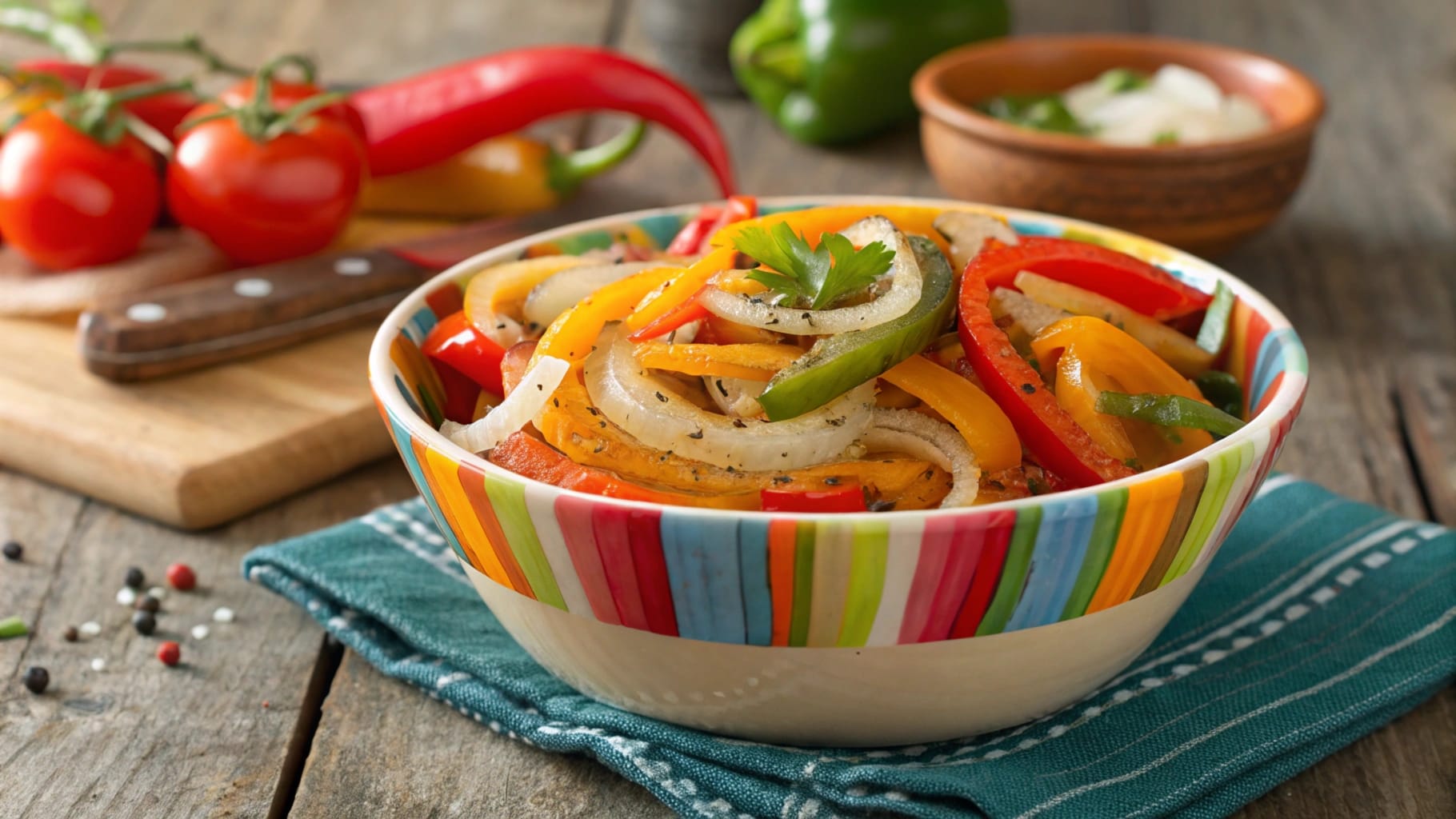Chipotle has become a household name when it comes to fast-casual dining. From their burritos to bowls, there’s one item that stands out for vegetarians, vegans, and anyone who just loves a delicious side: Chipotle Fajita Veggies. But what exactly are they, and why do people rave about them?
In this guide, we’re going to take a deep dive into all things Chipotle Fajita Veggies. We’ll explore the history, ingredients, nutritional facts, and even share some tips on how to make your own. So, grab a snack, get comfy, and let’s dig in!
What Are Chipotle Fajita Veggies?
When you think of Chipotle, what comes to mind? Tasty burritos packed with rice, beans, protein, and, of course, those iconic fajita veggies! But you might be wondering: what exactly are these veggies? Let’s break it down.
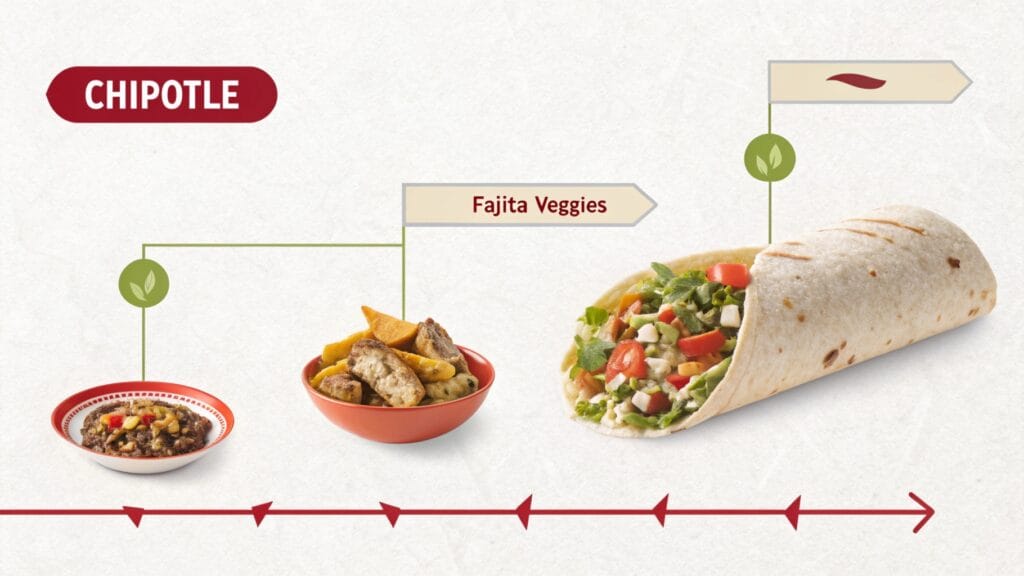
Origins and History of Fajita Veggies at Chipotle
Fajita veggies are a beloved addition to Chipotle’s menu, but they didn’t always exist. Initially, Chipotle was a burrito joint that focused mostly on meat options. It wasn’t until later that they expanded their offerings to include a variety of veggies for those looking for a plant-based option.
Fajita veggies at Chipotle are a combination of onions and bell peppers, sautéed until they’re tender but still slightly crisp. The veggies are seasoned with a blend of spices, giving them that signature smoky flavor that pairs perfectly with their other fresh ingredients.
Key Ingredients in Chipotle’s Fajita Veggies
So, what exactly is in these fajita veggies? It’s pretty simple, but that’s what makes them so delicious!
- Bell Peppers: Typically a mix of red, yellow, and green bell peppers, these veggies add both color and a sweet flavor.
- Onions: Red onions are used for their mild, slightly sweet taste, adding depth to the dish.
- Oil: The veggies are sautéed in oil, which helps them cook evenly while maintaining that delightful crispness.
- Seasoning: Chipotle’s fajita veggies are lightly seasoned with a blend of spices. While the exact formula is a closely guarded secret, we know it includes some basic seasonings like garlic, salt, pepper, and a touch of chili powder or smoked paprika for that distinct smoky flavor.
It’s a simple, yet flavorful combination that can elevate any meal, whether you’re adding them to a burrito, taco, or bowl.
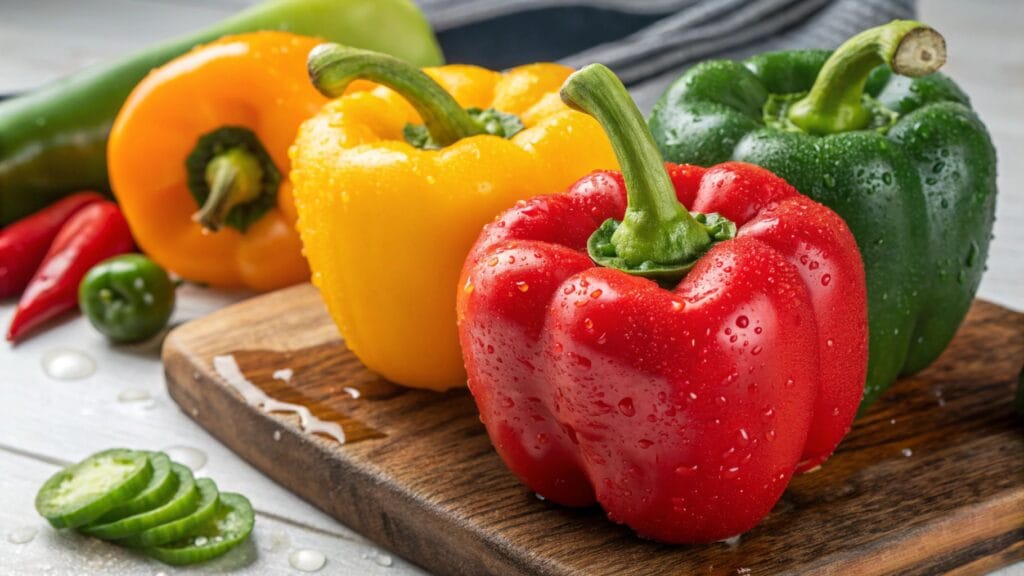
Why Chipotle’s Fajita Veggies Stand Out?
Now that we know what they’re made of, let’s talk about why Chipotle Fajita Veggies have become such a hit. After all, they’re not just for vegetarians—they’re a hit with meat-eaters too! So, what makes them so special?
The Flavor Profile: A Perfect Blend of Smoky, Sweet, and Savory
One of the reasons Chipotle Fajita Veggies stand out is their incredible flavor. The mix of sautéed onions and bell peppers creates a natural sweetness, but it’s the seasoning that takes them to the next level. The smoky undertones from the spices perfectly balance the natural sweetness of the veggies, while the slight char from the sautéing process adds a bit of savory goodness. The result? A veggie dish that’s complex, flavorful, and satisfying, no matter how you eat it.
Health Benefits of Chipotle Fajita Veggies
Let’s face it: when you’re eating at a fast-casual restaurant like Chipotle, health-conscious choices are important, especially if you’re trying to keep things balanced. The great thing about Chipotle’s fajita veggies is that they’re not just tasty—they’re also pretty good for you!
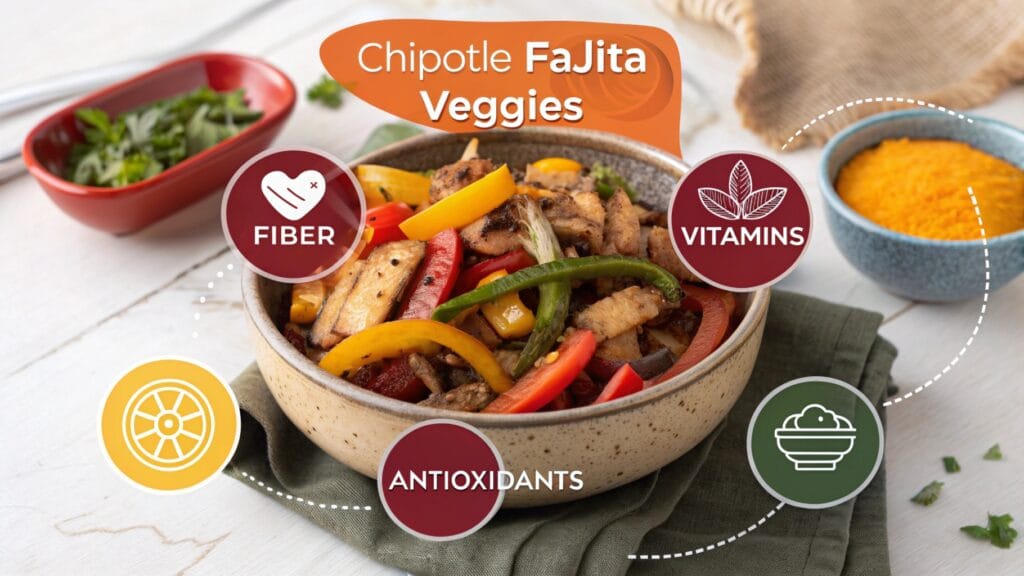
Fajita veggies are full of nutrients like:
- Vitamins: Bell peppers are packed with vitamin C, while onions provide important minerals and antioxidants.
- Fiber: Both peppers and onions are high in fiber, which helps with digestion and keeps you feeling full longer.
- Low in Calories: Fajita veggies are low in calories, making them a great option for anyone watching their intake or trying to eat more plant-based.
For those looking to cut down on carbs, fajita veggies are an excellent substitute for rice or beans, and they fit perfectly into a keto or low-carb diet. They’re also gluten-free, which makes them an excellent choice for anyone with dietary restrictions.
“Eating these veggies is like giving your body a boost of natural energy. You’re getting those vibrant nutrients while still satisfying your taste buds.”
How to Make Fajita Veggies Just Like Chipotle at Home
If you’re like many people, you probably love Chipotle’s fajita veggies so much that you want to recreate them in your own kitchen. And lucky for you, it’s easier than you think! Making your own fajita veggies can save you money and give you more control over the flavors.
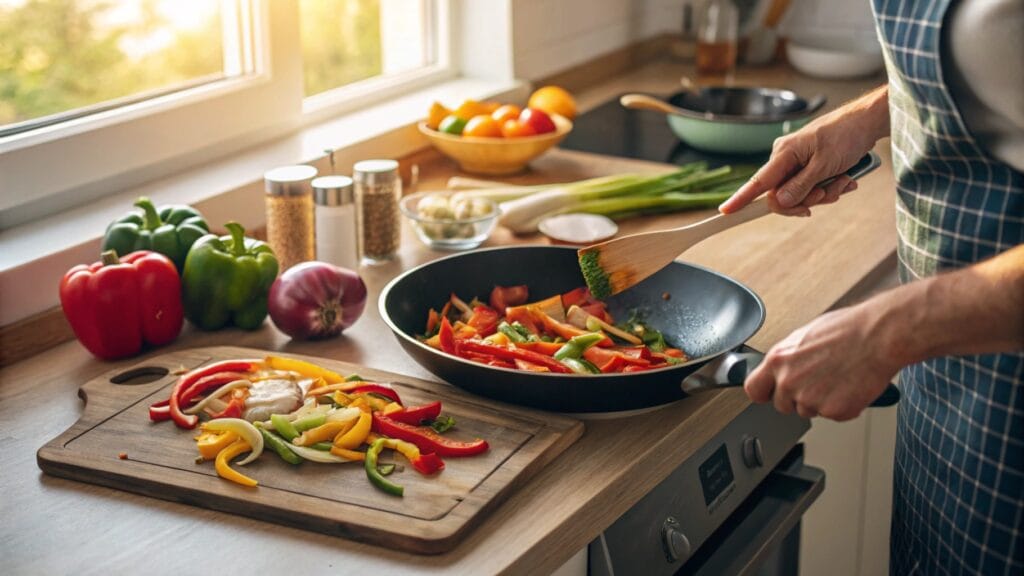
Essential Ingredients and Tools You’ll Need
To start, you’ll need just a few basic ingredients:
- Bell Peppers (red, yellow, and green)
- Red Onions
- Olive Oil (or any cooking oil of your choice)
- Seasonings (garlic powder, onion powder, smoked paprika, chili powder, salt, pepper)
You’ll also need the following kitchen tools:
- Skillet or Frying Pan: A good, non-stick skillet will help your veggies cook evenly.
- Cutting Board and Knife: For chopping the peppers and onions into thin strips.
- Spatula: To stir and toss the veggies while they’re cooking.
Step-by-Step Recipe for Homemade Fajita Veggies
- Prep the Veggies: Start by washing your bell peppers and onions. Cut the bell peppers in half, remove the seeds, and slice them into thin strips. For the onions, peel the outer layer and slice them into thin rings or strips.
- Heat the Pan: Heat a couple of tablespoons of olive oil in your skillet over medium-high heat. Once the oil is hot but not smoking, you’re ready to add your veggies.
- Sauté the Veggies: Add the bell peppers and onions to the skillet. Stir occasionally, making sure they cook evenly. Sauté for about 5–7 minutes until the veggies are tender but still have a little bit of crunch to them. You want that perfect balance of cooked and crispy!
- Add Seasonings: Sprinkle the veggies with garlic powder, onion powder, smoked paprika, chili powder, salt, and pepper. Stir well to make sure the spices coat the veggies evenly. Cook for another 2–3 minutes, letting the spices really sink in.
- Serve and Enjoy: Once your fajita veggies are perfectly cooked and seasoned, they’re ready to serve! Add them to a burrito, taco, or even a salad.
Table: Nutritional Information for Homemade Fajita Veggies
| Nutrient | Per Serving (1/4 Cup) |
|---|---|
| Calories | 60 |
| Total Fat | 3g |
| Saturated Fat | 0g |
| Sodium | 100mg |
| Total Carbohydrates | 10g |
| Dietary Fiber | 2g |
| Sugars | 5g |
| Protein | 1g |
| Vitamin C | 100% DV |
| Calcium | 2% DV |
Common Mistakes to Avoid When Making Fajita Veggies
Let’s be real—sometimes cooking can go wrong. Whether you’re in a rush or just trying out something new, mistakes happen. If you’ve ever tried making fajita veggies at home, you know that they can go from perfectly sautéed to mushy or bland in an instant. Don’t worry, though—let’s troubleshoot some common issues you might run into and how to fix them.
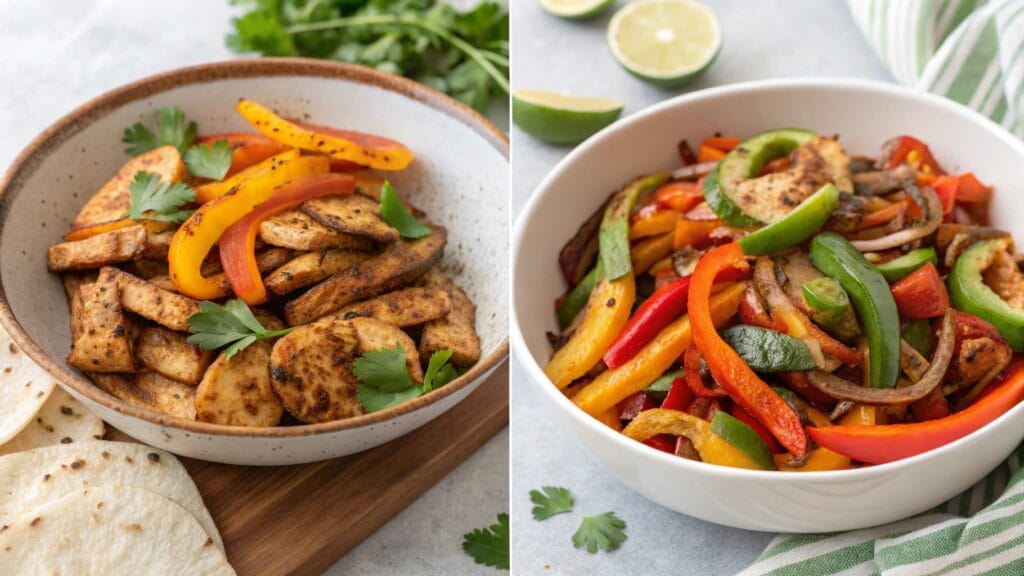
Problem #1: Fajita Veggies Are Too Soft or Mushy
This is a classic problem that many people run into when making fajita veggies. The key is to not overcook them! Overcooked veggies become soft and lose their satisfying crunch.
Solution: The Right Cooking Time and Heat for Crisp Veggies
Make sure to sauté the veggies on medium-high heat, and keep an eye on them. You want them to soften but still have a bit of crunch left. If you let them cook too long, they’ll become mushy and lose that signature texture.
Final Thoughts: Why Chipotle Fajita Veggies Should Be Your Go-To Side Dish
When it comes to building the perfect meal, whether you’re at Chipotle or cooking at home, one thing is certain: Chipotle Fajita Veggies are a must-have addition. They’re not just a flavorful topping; they’re a versatile side that can elevate any meal. From their smoky, sweet, and savory flavor profile to their numerous health benefits, it’s clear that these veggies are more than just a simple garnish—they’re an integral part of the Chipotle experience.
The Taste, Health Benefits, and Versatility of Fajita Veggies
First off, let’s talk about taste. As we’ve discussed, the fajita veggies at Chipotle have that irresistible balance of sweetness, smokiness, and savory flavor. The peppers and onions are sautéed to perfection, and with the right blend of spices, they add just the right kick without overwhelming your taste buds. Whether you prefer them in a burrito, a taco, or on a salad, they perfectly complement a variety of proteins—be it chicken, steak, or even just beans and rice. It’s like adding a layer of flavor magic to your meal.
But it’s not all about taste. The health benefits of Chipotle’s fajita veggies are a big reason why they’ve become so popular. They’re low in calories but packed with nutrients. We’re talking fiber, vitamins, and antioxidants that help support your body’s health. The vitamin C from bell peppers helps boost your immune system, and the fiber keeps your digestive system running smoothly. Plus, they’re a great way to sneak in some extra veggies into your meal without sacrificing flavor.
Here’s where the versatility of these fajita veggies really shines. You can use them in so many ways. Toss them in a salad for a fresh, crunchy addition. Wrap them in a tortilla for a veggie-packed taco or burrito. Layer them over rice and beans for a simple, satisfying bowl. Or—if you’re feeling adventurous—add them to scrambled eggs, stir-fries, or even sandwiches. You’re only limited by your imagination!
“Chipotle’s fajita veggies are a little like a flavor-packed sidekick—they make everything else around them better. Whether you’re keeping it simple or getting creative, they fit perfectly into any meal.”
So, if you’re looking for a way to make your meals a bit more exciting, healthy, and flavorful, the answer is simple: Chipotle Fajita Veggies should be your go-to side dish.
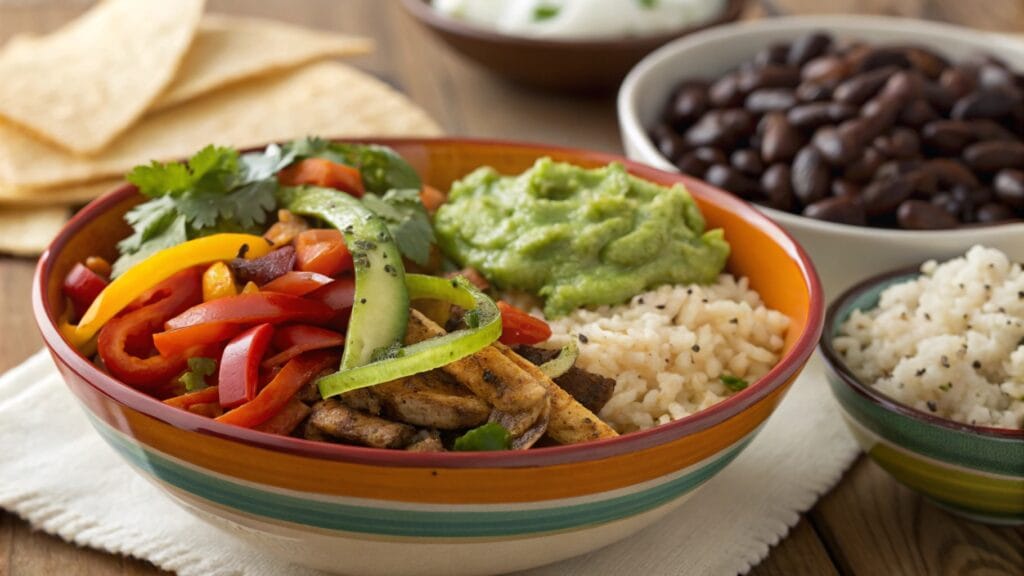
Conclusion: How to Make the Most of Chipotle Fajita Veggies in Your Meal
Now that you know all about Chipotle Fajita Veggies, it’s time to talk about how to make the most of them in your meal. Whether you’re ordering from Chipotle or preparing them at home, there are a few ways you can maximize their impact and take your meal to the next level.
- Layering Flavors: Chipotle’s fajita veggies are flavorful on their own, but they’re even better when paired with other ingredients. Think about combining them with your favorite protein—whether that’s grilled chicken, tender steak, or even a vegetarian protein like sofritas or beans. The key is to layer flavors so that the fajita veggies enhance the other ingredients without overpowering them.
- Go Bold with Sauces: Chipotle offers a variety of sauces and salsas that can complement the fajita veggies. From the smoky barbacoa sauce to the spicy tomatillo green-chili salsa, adding a sauce can really bring out the flavors of the veggies and make your dish even more delicious.
- Use Them in Non-Traditional Ways: As we mentioned earlier, fajita veggies don’t have to just be a side dish. You can get creative! Add them to soups, salads, or even wrap them in a lettuce leaf for a low-carb alternative to tacos. Don’t be afraid to mix things up and incorporate them into new recipes that make your meals more exciting.
- Balance Your Meal: While fajita veggies are a great addition to any meal, don’t forget about balancing your plate. Combine them with healthy carbs like brown rice, quinoa, or sweet potatoes, and add some healthy fats with guacamole or a drizzle of olive oil. A balanced meal will not only be more satisfying but also give you a wider range of nutrients.
- Go Custom: When you order at Chipotle, don’t be afraid to customize your order. Ask for extra fajita veggies, or if you’re craving something a bit more unique, try mixing the fajita veggies with other toppings, like corn, lettuce, or extra guacamole. The beauty of Chipotle is that you can build a meal exactly how you want it.
Wrapping Up
Chipotle Fajita Veggies are more than just a tasty side dish—they’re a game-changer for anyone looking to enhance their meals with vibrant, nutritious, and flavorful ingredients. Whether you’re looking for a healthy topping, a flavorful addition to your burrito, or a way to make your homemade dishes stand out, these veggies are the perfect solution.
Next time you’re at Chipotle, don’t forget to order some fajita veggies. And if you’re feeling adventurous, try making them at home. Either way, you’ll be adding a delicious and nutritious element to your meals that everyone will love.

